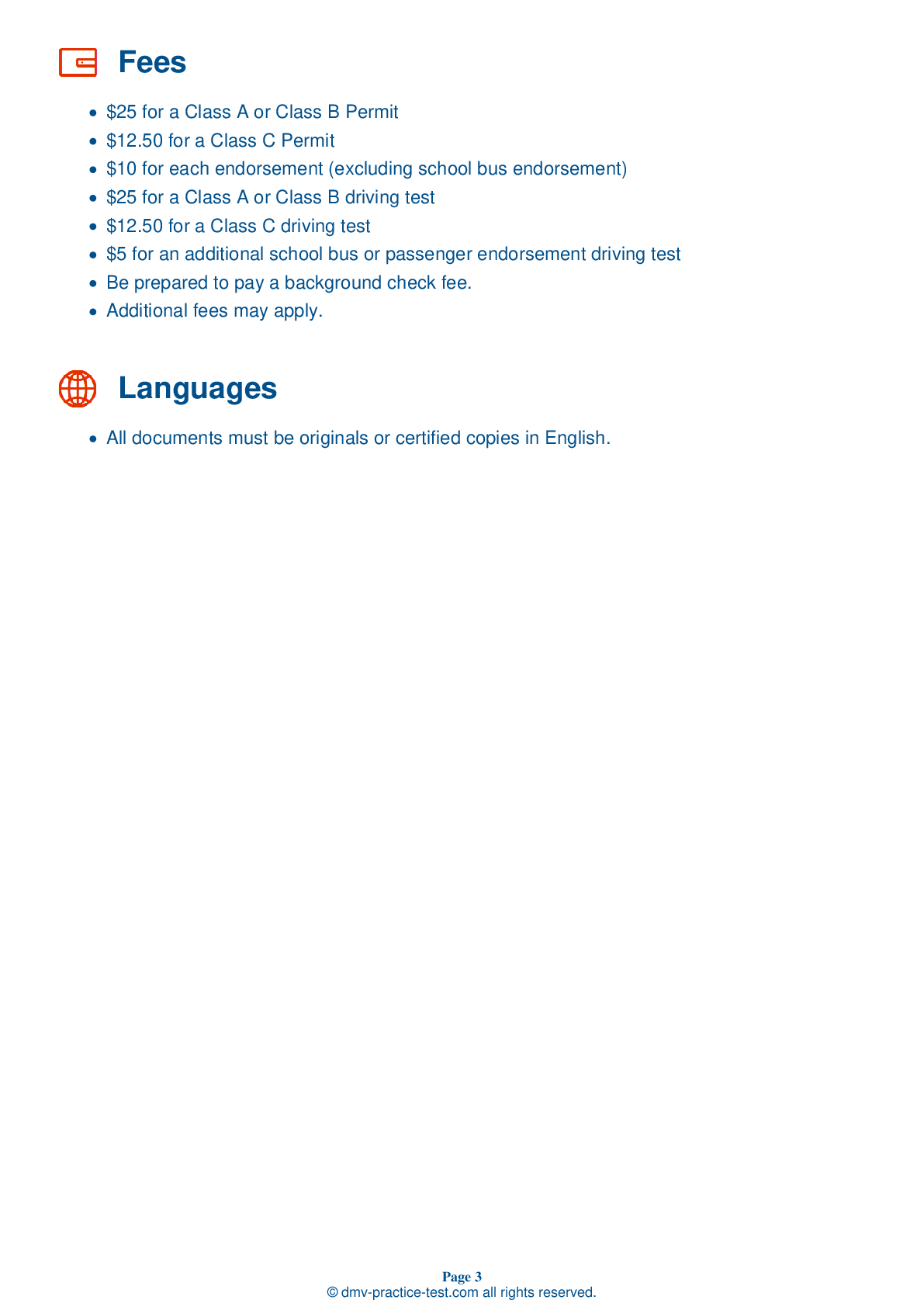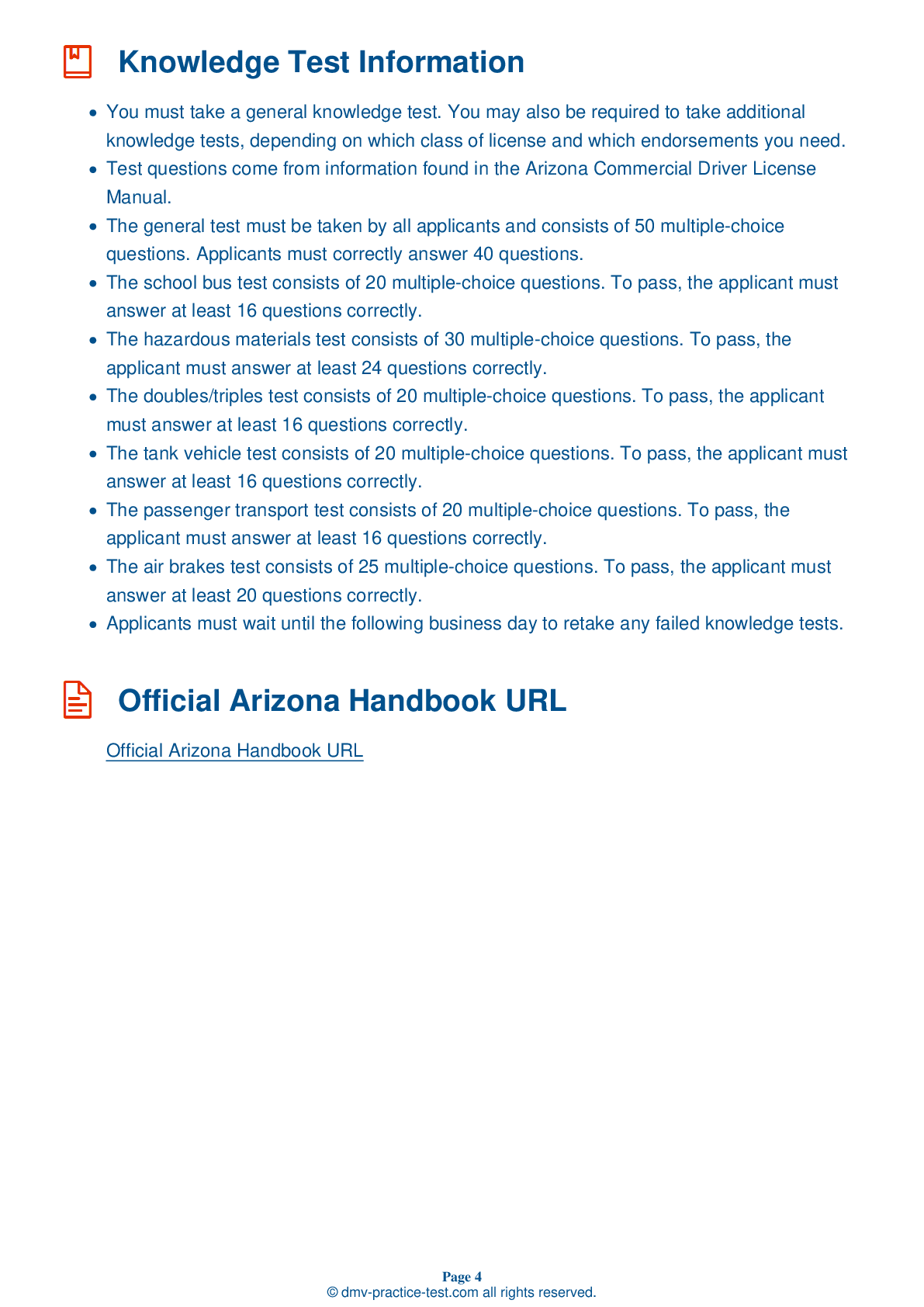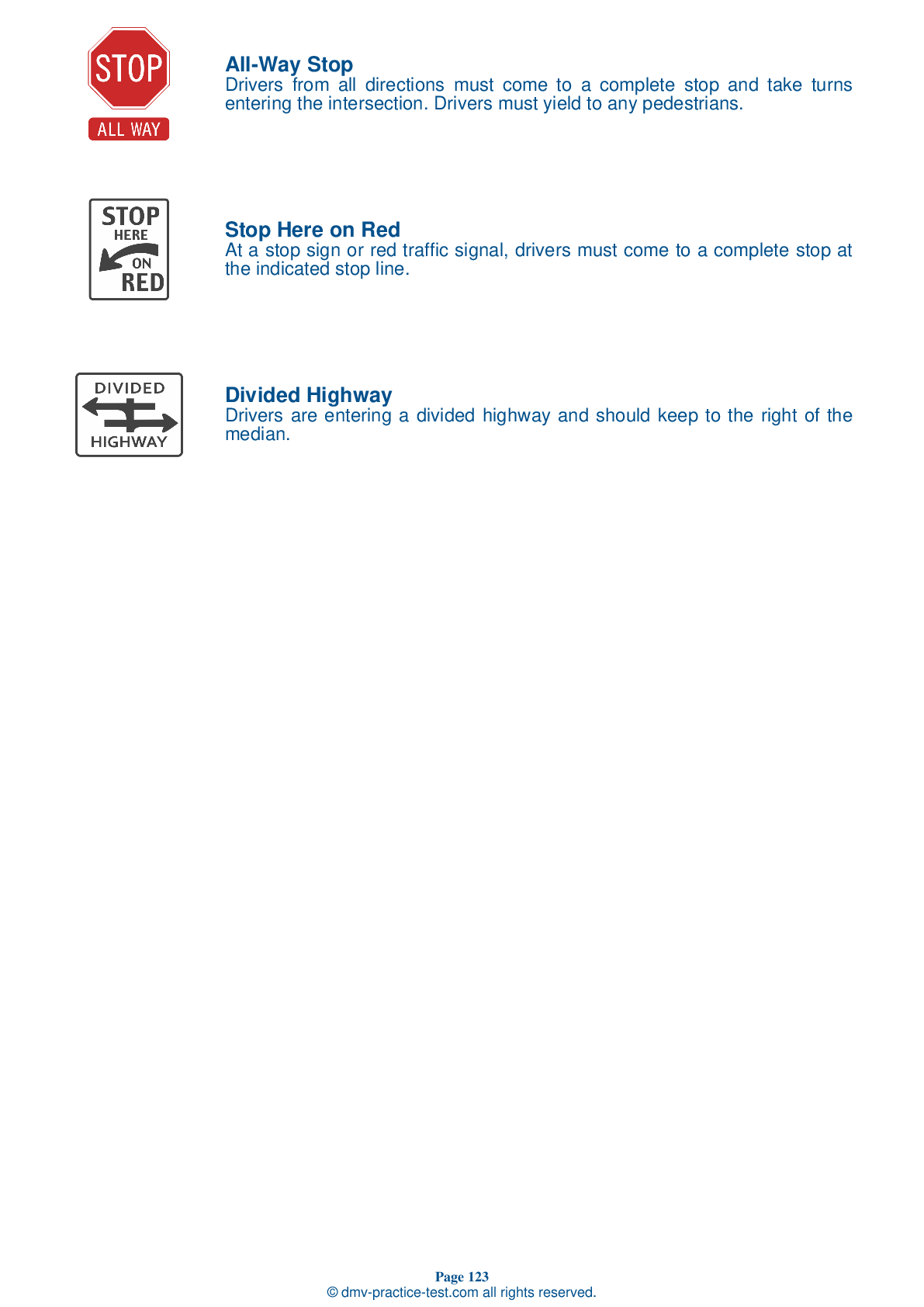Combination #1
Combination Vehicles Practice Test | Arizona 2025 #1 Page 2 of 3
Train for FREE online with our Arizona CDL combination vehicle test. The official exam test consists of several obligatory parts, with all of them checking your knowledge of different blocks of road rules. If you need to obtain a AZ combination license in 2025, practice as much as possible. Free sample tests published on our website will help you check and improve your knowledge and boost your grades. Please bear in mind that DMV requirements for issuing a combination license may vary from state to state.
20
16
20
8 . When coupling a trailer:
When coupling, make sure you couple matching glad hands. They are often color-coded to help drivers avoid mistakes. Typically, blue is used for service lines and red is used for emergency lines.
9 . In a vehicle equipped with an automatic tractor protection valve, the valve will pop out when air pressure drops to a level between:
In vehicles equipped with an automatic tractor protection valve, the valve will pop out if air pressure drops to a level between 20 and 45 psi. When the valve pops out, the protection valve will close, stopping the flow of air.
10 . When backing a trailer, you must first turn the steering wheel:
When backing a vehicle without a trailer, a driver must turn the vehicle in the direction that they want to go. However, when backing with a trailer, the driver must begin by turning in the opposite direction. Once the trailer starts to turn, they should turn the wheel in the other direction to follow the trailer.
11 . If the emergency air line loses pressure:
The tractor protection valve keeps air in the trailer's braking system should the trailer break away or develop a leak. A loss of air pressure in the emergency line will cause the tractor protection valve to open and the emergency trailer brakes to activate.
12 . When coupling a trailer, you should:
When coupling air brake hoses, you should make sure the proper pairs of gland hands are connected. They are sometimes color-coded to help drivers avoid mistakes. Typically, blue is used for service lines and red is used for emergency lines.
13 . During a trip, landing gear should be:
Landing gear, or trailer supports, should always be completely raised before a vehicle is driven. Landing gear that is not entirely raised could catch on railroad tracks or other hazards on the roadway.
14 . When backing up while coupling a trailer, the tractor should be positioned:
When backing up to couple a trailer, you should position the tractor directly in front of the trailer. Trying to couple while backing at an angle could cause the trailer to move and the landing gear to break.
2025 Arizona | Frequently Asked Questions
To acquire a CDL Tank endorsement in Arizona, you must first have a Commercial Driver's License (CDL). Then, study the Arizona Commercial Driver License Manual’s tank vehicle section. After that, schedule and pass the Tank Vehicle endorsement written test at an Arizona Motor Vehicle Division (MVD) office. The endorsement will be added to your CDL upon passing the test.
To obtain a CDL Tank license, it's essential to first have a Commercial Driver's License (CDL). Then, you need to study the tank vehicle section of the Commercial Driver License Manual. Once you're prepared, schedule and pass the Tank Vehicle endorsement written test at your local Motor Vehicle Division (MVD) office. The endorsement is added to your CDL upon passing.
While specific training or experience is not legally mandatory for a CDL Tank endorsement in Arizona, it's highly recommended to understand the unique handling characteristics and safety concerns of tank vehicles. Studying the tank vehicle section of the Arizona Commercial Driver License Manual thoroughly is crucial. Practical experience or training can significantly improve your chances of passing the endorsement test.
Yes, to obtain a CDL Tank endorsement in Arizona, you must pass an additional written test that focuses on the knowledge required to safely operate a tank vehicle. This includes understanding the vehicle's handling characteristics, inspecting tank vehicles, and understanding the effects of surge and liquid movement on vehicle stability.
The written test for the CDL Tank endorsement in Arizona includes subjects such as tank vehicle inspection, safe driving techniques, loading and unloading procedures, and emergency response. Additionally, it covers topics like identifying hazardous materials, understanding weight distribution, and proper placarding requirements.
The CDL Tank endorsement assessment primarily focuses on knowledge rather than specific maneuvers. It evaluates your understanding of inspecting tank vehicles, recognizing high center of gravity and its effects, handling stability and surge, safe driving rules, emergency procedures, and understanding the operation of special purpose tanks.
Yes, drivers with a CDL Tank endorsement must comply with federal and state regulation regarding load limits, vehicle inspections, and hours of service. They also must handle hazardous materials appropriately if they have a Hazardous Materials (HazMat) endorsement. Additionally, they cannot operate a tank vehicle under the influence of alcohol or drugs.
No, a valid CDL Tank endorsement is required to transport liquid or gas materials. This requirement is strictly enforced under federal and state laws. Driving without the proper endorsement can lead to fines, license suspension, and even imprisonment. It's essential to obtain the correct endorsements for the specific type of cargo you'll be transporting.
The CDL Tank endorsement can be added to an existing Commercial Driver's License. You don't need a fresh application. However, you'll have to pass a knowledge test specific to tank vehicles. Once you pass the test, the endorsement will be added to your CDL, allowing you to transport liquid or gas materials legally.
Yes, handling hazardous materials with a CDL Tank endorsement requires additional training and certification. Drivers must obtain a Hazardous Materials (HazMat) endorsement, which involves passing a written test and a TSA background check. Additionally, they must follow specific safety protocols when loading, unloading, and transporting these materials to prevent accidents and spills.



